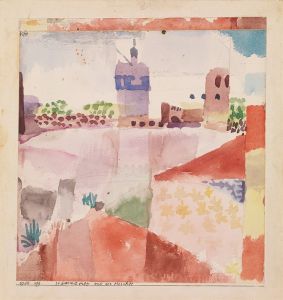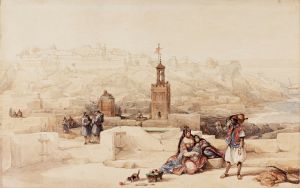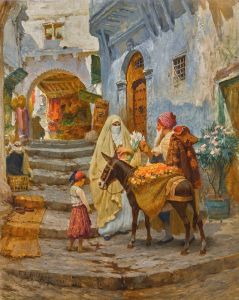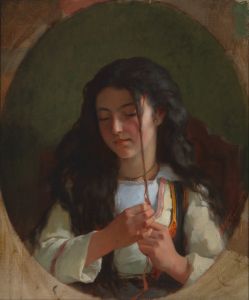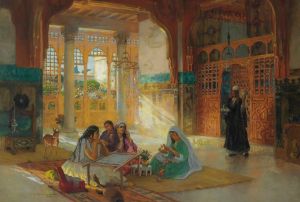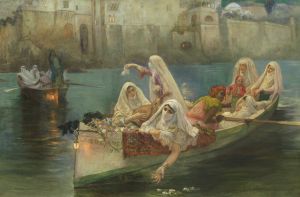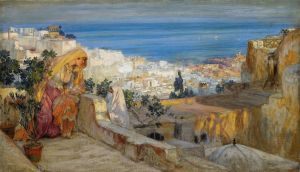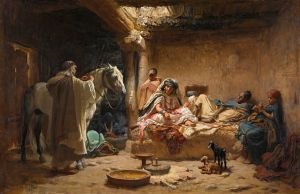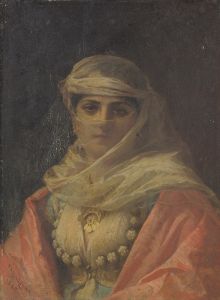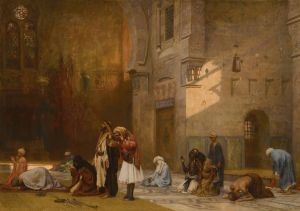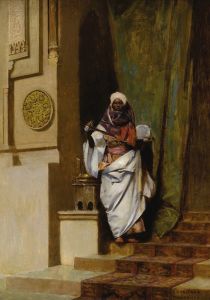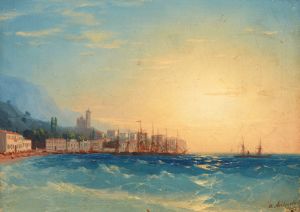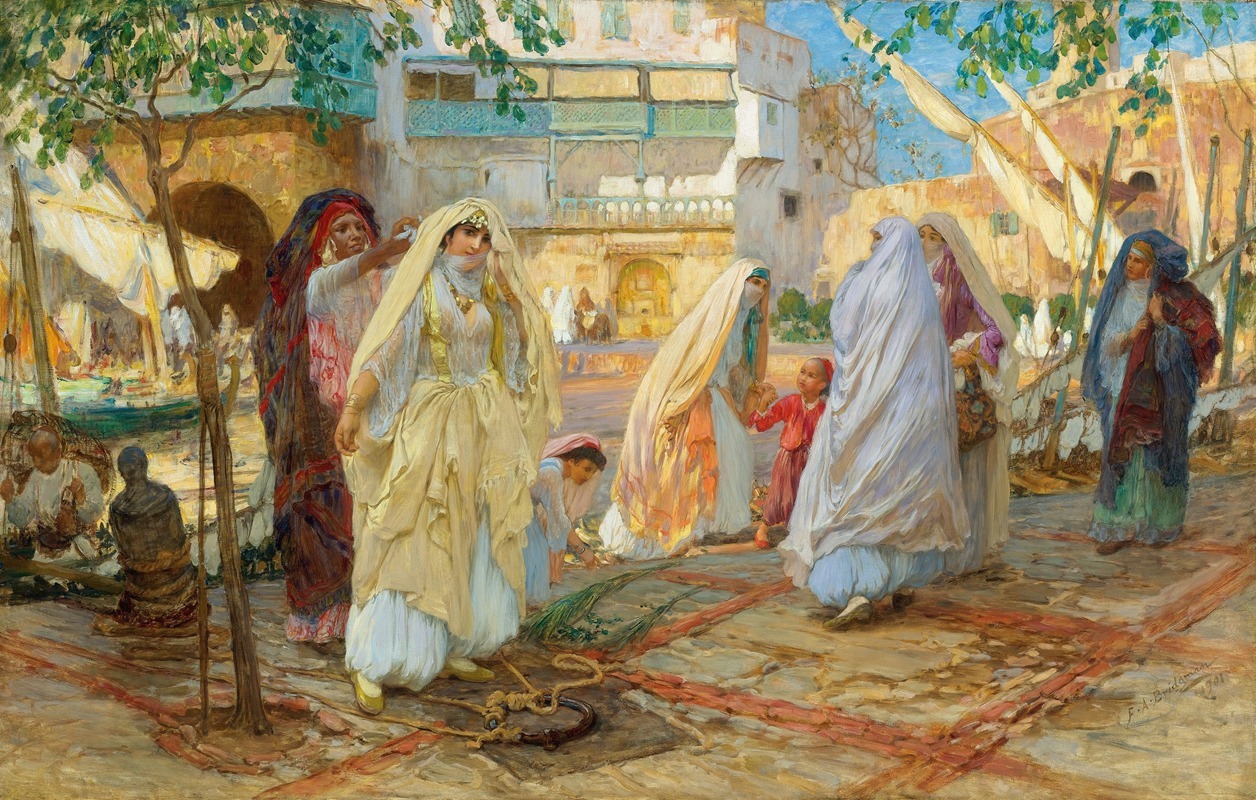
Après La Fête;-Port D’alger
A hand-painted replica of Frederick Arthur Bridgman’s masterpiece Après La Fête;-Port D’alger, meticulously crafted by professional artists to capture the true essence of the original. Each piece is created with museum-quality canvas and rare mineral pigments, carefully painted by experienced artists with delicate brushstrokes and rich, layered colors to perfectly recreate the texture of the original artwork. Unlike machine-printed reproductions, this hand-painted version brings the painting to life, infused with the artist’s emotions and skill in every stroke. Whether for personal collection or home decoration, it instantly elevates the artistic atmosphere of any space.
Frederick Arthur Bridgman was an American artist known for his detailed and vibrant depictions of scenes from North Africa and the Middle East, often categorized under the Orientalist movement. Born in 1847 in Tuskegee, Alabama, Bridgman moved to Paris in 1866 to study art, where he became a pupil of the renowned academic painter Jean-Léon Gérôme. Bridgman's works are celebrated for their meticulous attention to detail and their ability to capture the essence of the exotic locales he visited.
"Après La Fête;-Port D’alger" is one of Bridgman's paintings that reflects his fascination with the culture and landscapes of North Africa. Although specific details about this particular painting are scarce, it can be inferred from the title that the work depicts a scene in the port of Algiers, possibly after a festive occasion. Bridgman was known for his ability to portray the daily life and architecture of the regions he visited, often highlighting the interplay of light and shadow, as well as the vibrant colors that characterized these locales.
Bridgman's travels to North Africa, particularly to Algeria, provided him with a wealth of inspiration. He made several trips to the region, starting in the 1870s, which allowed him to gather sketches and studies that he later transformed into finished paintings in his Paris studio. His works often featured bustling marketplaces, serene landscapes, and intimate domestic scenes, all rendered with a keen eye for authenticity and detail.
The Orientalist movement, of which Bridgman was a part, was characterized by Western artists' fascination with the cultures and aesthetics of the East. While some Orientalist works have been critiqued for their romanticized or stereotypical portrayals, Bridgman's paintings are often praised for their respectful and accurate depictions, likely due to his firsthand experiences and extensive travels in the regions he painted.
Bridgman's artistic style was heavily influenced by his academic training under Gérôme, which is evident in his precise draftsmanship and the polished finish of his paintings. His works often feature a harmonious composition and a balanced use of color, which contribute to their overall sense of realism and vibrancy.
Throughout his career, Bridgman exhibited his works in prestigious venues, including the Paris Salon, where he received critical acclaim. His paintings were also popular among collectors, and he enjoyed a successful career both in Europe and the United States.
While "Après La Fête;-Port D’alger" may not be as widely known as some of Bridgman's other works, it nonetheless exemplifies his skill in capturing the essence of a moment and place. His ability to convey the atmosphere and cultural richness of North Africa continues to be appreciated by art enthusiasts and historians alike.
In summary, Frederick Arthur Bridgman's "Après La Fête;-Port D’alger" is a testament to his dedication to portraying the beauty and complexity of North African life. Through his detailed and vibrant paintings, Bridgman offers viewers a glimpse into a world that fascinated many Western artists of his time, while also providing a valuable historical record of the regions he visited.





